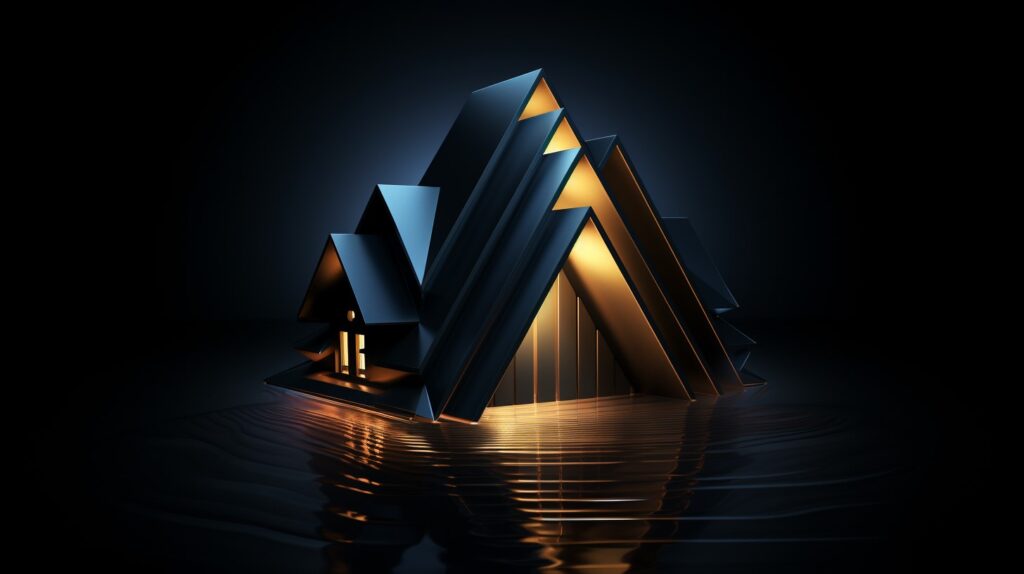
Introduction
In the fast-paced world of branding, a logo is not just a symbol; it’s the face of the company, its silent ambassador, and a powerful tool for recognition. The process of designing a logo is a journey of transformation from a mere concept to a visual entity that encapsulates the essence of a brand. It is a delicate process that involves creativity, strategy, and understanding of the brand’s core values and the market it serves. The importance of logos in establishing brand identity cannot be overstated—they are the shorthand for the brand story, creating a connection between the company and its customers. This article will walk you through the detailed logo design process, exploring each step involved from the initial conception to the final design, offering insights into the intricate art of logo creation.
Understanding the Brand
Before a designer sketches the first line of what may become an iconic logo, there’s a foundational phase of understanding the brand. This groundwork lays the framework for all design decisions to follow.
Establishing the Brand’s Vision and Mission
The first step involves diving deep into the brand’s soul, understanding its vision, mission, and the message it wants to convey. It’s about having candid conversations with stakeholders and peeling back the layers to reveal the brand’s aspirations. This phase is a mix of interviews, workshops, and research, requiring the designers to become part-time detectives, piecing together the story that will be represented in the logo.
Identifying the Target Audience
A logo must resonate with its intended audience, making audience identification pivotal. It involves demographic research to understand the age, gender, and socio-economic status of the potential customer base, as well as psychographic profiling, which dives into the psychological attributes like interests, values, and attitudes. The goal is to emerge with a customer avatar that can guide the design process.
Analyzing the Competition
Standing out in a sea of brands requires knowledge of what’s already out there. Conducting a thorough analysis of competitors’ logos can provide insights into trends within the industry, what works, what doesn’t, and most importantly, how to differentiate. This process often involves mapping out competitors on a spectrum, from conservative to avant-garde, to find a unique space for the new logo.Conceptualization Phase

Artificial Intelligence and Logo Design
With a thorough understanding of the brand and its environment, designers move to the conceptualization phase, where ideas begin to take form.
Brainstorming Sessions
Creativity comes to the forefront during brainstorming sessions. Designers employ various techniques such as mind mapping or SCAMPER to generate a wide array of ideas. These sessions are not about judgment but about volume and diversity, welcoming all contributions that could lead to the logo’s inception.
Sketching Preliminary Designs
In the sketching stage, ideas start to materialize. This is where designers decide whether to go for hand-drawn sketches, which can offer a more organic feel, or digital drafts. Both have their place, and many designers will switch between them. Creativity thrives within constraints, so this stage often involves setting some boundaries to steer the creative process in the right direction.
Selecting the Right Color Palette
Color choice in logo design is not just an aesthetic decision—it’s a strategic one. Colors evoke emotions and carry meanings, so selecting the right color palette is crucial in ensuring the logo communicates the right message. The psychology of color plays a significant role, with each hue having a different impact on consumer behavior and perception.
Design Execution
As ideas become more concrete, the execution phase is where designs start to take their final shape.
Digitization of Sketches
Once a sketch has been selected for development, it enters the digitization stage. This involves redrawing the design using vector graphics software to ensure scalability and versatility. This software allows for infinite adjustments and scalability, ensuring that the logo can be resized without loss of quality.
Refining the Design
Design refinement is a meticulous process. It involves an iterative cycle of revisions, where designers fine-tune every line, curve, and shade. Feedback is solicited from various stakeholders throughout this phase, ensuring the design aligns with the brand vision and appeals to the target audience.
Typography in Logo Design
If the logo includes text, the choice of typography can make or break the design. The font should complement and convey the brand’s personality. While some brands opt for the uniqueness of custom lettering, others might choose pre-existing fonts for their clarity and recognizability. Each choice in typography speaks volumes about the brand.
Testing and Revision Cycle
A logo is never finalized without rigorous testing and revisions. This cycle is essential to ensure that the logo will perform well in the real world.
Internal Reviews and Stakeholder Feedback
Internal reviews are a critical part of the process. Feedback from the design team and key stakeholders helps identify any elements that need tweaking. Each round of revisions brings the logo closer to its final form, ensuring it meets all predetermined objectives.
Consumer Testing
Before a logo is launched, it’s tested with its most critical audience—potential customers. Focus groups, surveys, and A/B testing provide valuable insights into how the logo is perceived by the public. These responses can lead to crucial adjustments that enhance the logo’s effectiveness.
Final Adjustments
Taking into account all the feedback and testing results, final adjustments are made. These may include precision tweaks for clarity, legibility, and overall impact. The design team prepares various logo formats and resolutions to ensure the logo is ready for all types of media.
Launch and Implementation
Launching a new logo is as strategic as designing one. It’s not just about unveiling a design but about introducing a new chapter in the brand’s story.
Creating a Brand Style Guide
A comprehensive brand style guide is created to ensure consistency in the logo’s use across all platforms and media. This document details how the logo should be displayed, space requirements, acceptable colors, and more.
Launch Strategy
The launch strategy often coincides with a broader marketing campaign. It’s a calculated introduction to the market, ensuring that the new logo is seen in the best light and in the right contexts. This phase also involves updating all brand assets, from business cards to billboards, ensuring that the new logo is implemented consistently everywhere.
Monitoring Brand Reception
After the launch, it’s vital to monitor how the logo is received by customers and the market at large. Social media can provide immediate feedback, while brand tracking over time can offer deeper insights into the logo’s performance and its impact on brand perception.
Monitoring Brand Reception
Following the launch, the brand’s pulse is felt most acutely through the reactions and interactions of its audience. Social media platforms become a sounding board where immediate responses are shared, discussed, and analyzed. Positive feedback can help validate the design choices, while constructive criticism may offer opportunities for improvement or highlight areas that may need clarification within the brand messaging.
Customer Engagement and Feedback
Engagement is the lifeblood of brand reception. Brands might invite customers to share their impressions of the new logo through polls, comments, and other interactive means. This engagement not only fosters a sense of community around the brand but also provides real-time feedback that is invaluable for the brand’s strategic positioning.
Long-term Brand Tracking
Beyond initial reactions, long-term tracking allows for an assessment of the logo’s impact over time. This involves analyzing brand performance metrics, customer recognition, and the logo’s influence on sales and marketing campaigns. The longevity of a logo’s appeal can be determined through consistent observation and analysis of how it performs and resonates with the audience in different contexts and timeframes.
Adaptability and Future-proofing
A logo must stand the test of time. Therefore, monitoring its relevance and adaptability is crucial. Does the logo adapt well to evolving marketing channels? Is it flexible enough for a digital-first world? These questions are central to future-proofing a logo. The process might involve anticipating future trends and ensuring that the logo can be updated without losing its core identity.
The Iterative Nature of Logo Design
The logo design process does not end with the launch. In reality, it’s a cyclical process. As markets evolve and brands grow, logos may need to be revisited and refined. This section delves into the ongoing nature of logo design and the importance of remaining agile and responsive to the changing market.
Revisions and Rebranding
While a great logo should be timeless, it also needs to be dynamic. Changes in company strategy, mergers, or market evolution can all necessitate a logo revision or a complete rebrand. When is the right time to revise a logo, and how can it be done without alienating the existing customer base? This is a delicate balancing act that requires both design acumen and strategic foresight.
Maintaining Brand Integrity
Even as logos evolve, maintaining brand integrity is essential. This involves preserving the logo’s core elements which customers have come to know and trust. The process includes understanding which aspects of the logo are untouchable and what can be tweaked to keep the brand fresh and relevant.
The Role of Technology in Logo Design
The digital age has transformed logo design from pen-and-paper sketches to sophisticated digital creations. This section looks at how technology shapes logo design and the opportunities it presents for brands.
Design Software and Tools
The evolution of design software has greatly enhanced the precision and capabilities of logo designers. From vector-based software to 3D modeling programs, designers have an array of tools at their disposal. This subsection explores the most popular tools and how they contribute to the design process.
Digital and Social Media Integration
Today’s logos need to work well across various digital platforms. This subsection examines the considerations for creating logos that are optimized for social media, apps, and digital advertisements, ensuring they are versatile and recognizable in any format.

Emerging technologies such as artificial intelligence (AI) are starting to play a role in the design process. AI can offer design suggestions, create variations, and even predict market trends. Here we discuss the potential impact of AI on logo design and the balance between technology and human creativity.
Case Studies: Successful Logo Transformations
This section highlights successful logo redesigns and the strategies behind them. Through a selection of case studies, we’ll analyze what made these logo transformations resonate with audiences and stand the test of time.
Before and After: The Impact of Redesign
By comparing before and after versions of logos, we can see the practical application of design principles. This subsection breaks
down the changes and the strategic thinking that led to these decisions.
Public Reception and Industry Recognition
Successful case studies often come with public acclaim and industry recognition. This part explores how redesigned logos were received by the public and the accolades or criticisms from the design community.
Final Thoughts and Reflections
In this conclusive section, we’ll take a moment to reflect on the transformative journey a logo undertakes from a mere idea to a brand’s emblematic flag bearer. The right logo is a confluence of art, science, and strategic thought. It encapsulates the brand’s essence, adapts to its growth, and communicates its message succinctly and effectively.
The Lasting Power of a Logo
We conclude by acknowledging the lasting power of a logo. A well-crafted logo does more than identify; it communicates a story, embodies trust, and even inspires loyalty. Its power lies in its simplicity and its ability to evoke the same values and emotions as the brand it represents.
The Future of Logo Design
As we look to the future, the logo will continue to evolve. It will adapt to new trends, technologies, and mediums, but the core principles of design will remain unchanged. The future of logo design is an exciting frontier, one that holds endless possibilities for creativity and innovation.